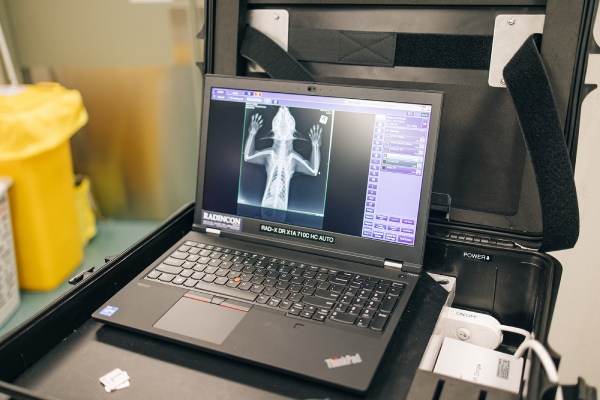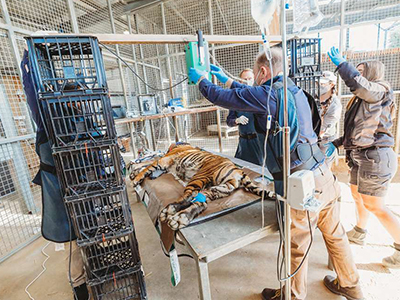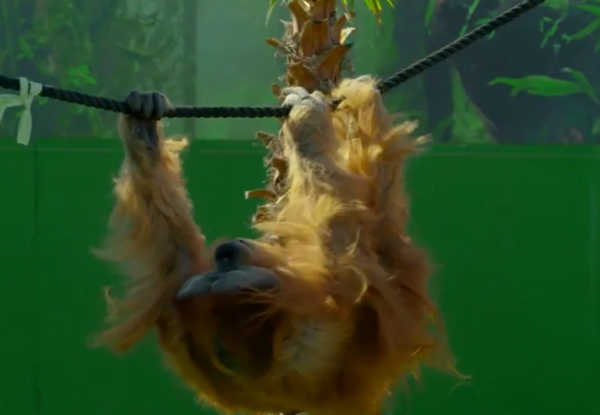Radincon has been a proud supporter of Sydney Zoo since it opened in December 2019.
Sydney Zoo’s location means it’s accessible for the huge percentage of the city’s population who live out west, as well as for tourists. There are thousands of animals to see, from the classic Australian kangaroos and koalas to top predators like lions and tiger, to endearing favourites like meerkats and red pandas.
Caring for so many animals means a lot of work for the keepers, vets and animal welfare teams. Keepers monitor daily behaviour and keep an eye out for any change from the normal. That could be moving awkwardly, favouring one leg, or overall listlessness and not moving at all. Wild animals are especially good at hiding pain, since any sign of weakness can be dangerous, so careful observation is essential!
In addition to this monitoring, a program of regular health checks is used to assess all aspects of each animal’s health, while at the same time keeping human to a minimum. Radincon has assisted with these from the start. Not only have we supplied X-ray and ultrasound equipment, our staff have been on hand to advise about the equipment – although we leave the heavy lifting to the experts!
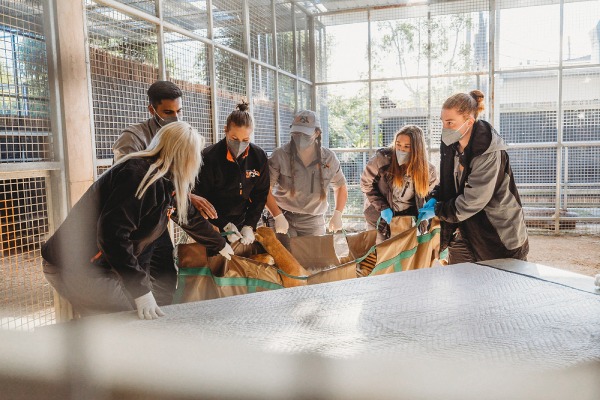
The standard health check regime includes non-invasive procedures such as weighing; blood and urine tests; a skeletal survey; ultrasound; oral examinations and of course checking eyes and ears. Some vaccinations are given as a standard. There are often specific areas of assessment depending on the species and the individual history of the patient.
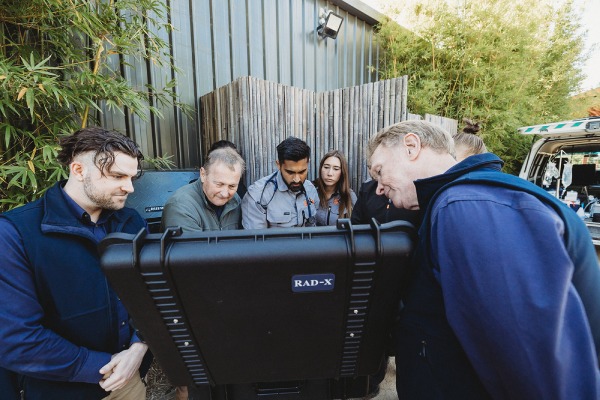
Lions
Even the king of the jungle needs health checks!
Sydney Zoo have four lion brothers. Here we’re putting 5-year-old Sheru through the full range of tests. He scored full marks for health, a testament to the care the Sydney Zoo keepers lavish on their charges.
You might also notice the milk-crate frame used to hold the X-ray equipment.
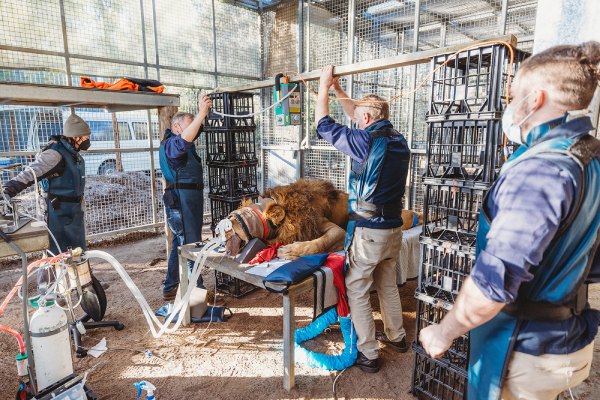
With mobile x-ray equipment, it’s possible to get closer to the animals, but there’s still a need to position the unit and the sensor panels. It’s often easier to move the equipment than the patient! This (unpatented) Radincon design is portable and flexible for use all around Sydney Zoo. The x-ray unit and the DR, however, are top quality. It’s about getting the best images possible.
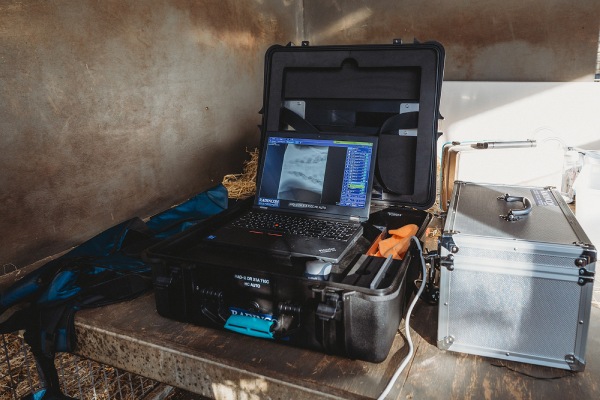
Santan The Orangutan
Santan is unusual amongst the Sydney Zoo animals in that he’s been treated by a human orthopaedic surgeon.
Santan’s 45 years old, which is equivalent to 75 orangutan years, and he’s suffering from arthritis. With 97% of his DNA the same as a human, he also has similar anatomy, so it was relatively simple for Dr Paul Thornton-Bott to inject steroids into his hips and his right shoulder.
Santan’s back in his enclosure with his daughter, in a lot less pain and moving more freely. Here’s hoping he’ll stay king of the swingers for some years to come.
Red Pandas
Tashi and Pinju are much smaller than the other animals we’ve mentioned above, but what they lack in size they make up for in cuteness factor.
They’re red pandas, with beautiful rich fur to keep them warm through the harsh winters of their native Himalayas. Expert climbers with some of the cutest striped faces you’ll ever see, they’re easier to examine than the bigger animals. Once you catch them, anyway!
Tashi’s relatively new to Sydney Zoo, having arrived in January this year. She’s now a charming companion and potential mate for Pinju. Yes, they both got clean bills of health!
***
Our hats go off to the vets at Sydney Zoo, who care for an amazingly wide range of different animals. It’s always interesting for us to see the similarities between these exotic species and more common animals. Santan is enough like us for a human doctor to treat him. Tigers, like their smaller cousins domestic cats, tend to suffer from kidney disease in old age.
Above all, we’re impressed and grateful at the way the entire Sydney Zoo team care for their thousands of animals, enabling so many of them to live far longer than they would in the wild.
We look forward to an ongoing relationship with Sydney Zoo to care for the thousands of animals they look after in Western Sydney.
